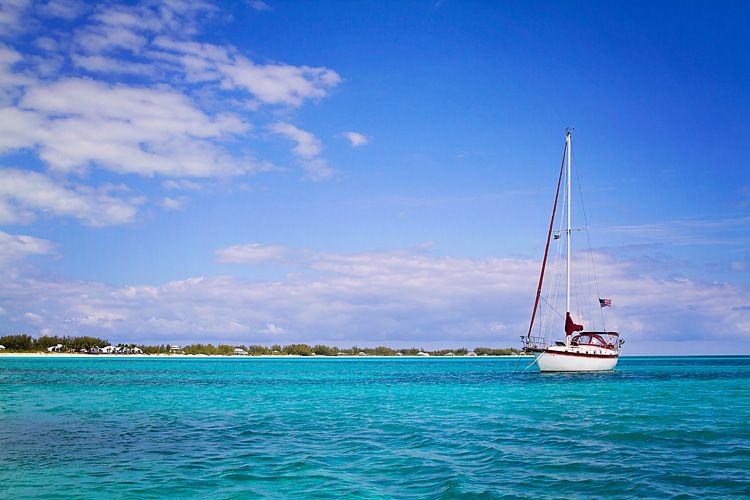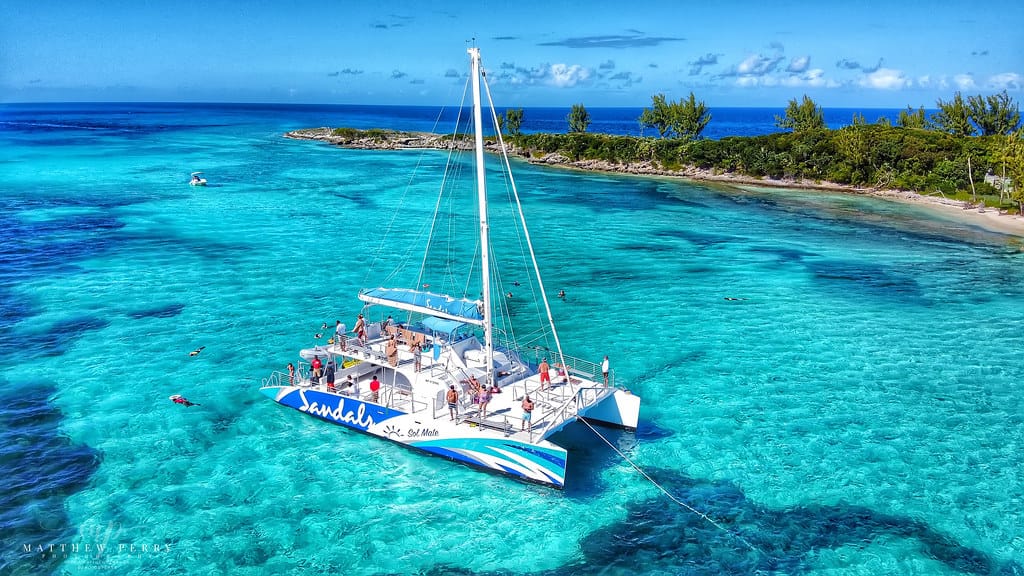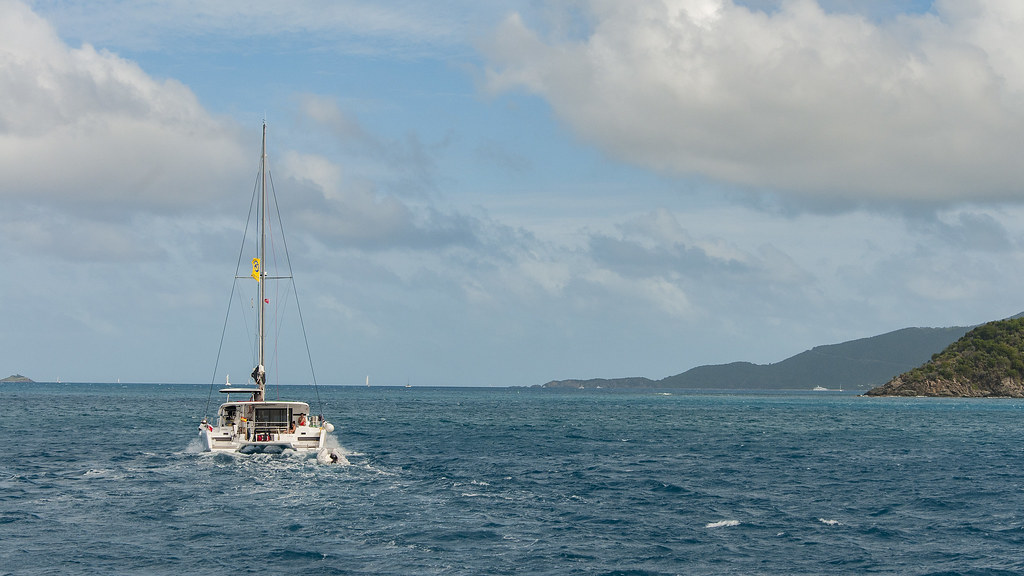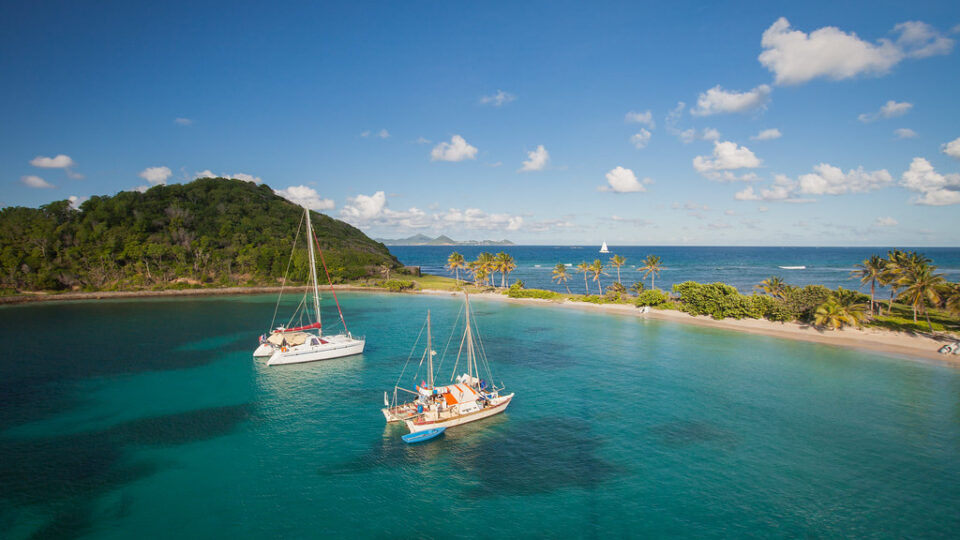Best Sailing Routes in the Caribbean
Sailing to the Caribbean is a must experience for all sailors. Warm breezes, crystal pure cerulean waters, and unspoiled natural scenery. The water calls to all of us, and with all these spectacular destinations in the Caribbean Sea, you have so many choices for a sailing itinerary. These islands are the ideal sailing location for everybody. Even if you are a beginner you can do it depending on which place you will depart from. With varying levels of experience on deck, some beginners choose to take a skipper onboard. Alternatively, if you have adequate experience you can certainly do it on your own. In any case, the Caribbean is a sailing destination that combines a plethora of choices for all kinds of sailors. And, that’s why it is the most popular destination among boaters. So, let’s move on and see the best sailing routes in the Caribbean. Keep reading!
Best Time to Visit the Caribbean
The Caribbean Islands lie in the heart of the tropics, stretching almost 2,500 miles long but only 160 miles wide. This feature gives them a year-round feeling of everlasting summer. Swimming, snorkeling, and kayaking are always in season because the water temperature stays approximately 80 degrees throughout the year. The Caribbean’s hurricane season runs from July to November. September and October are hurricane season’s peak months. The islands in the hurricane belt, particularly those in the north, such as the Bahamas, Cuba, and Turks & Caicos, are the most vulnerable. Those who sail on the edge of the hurricane belt or to the south of it are more likely to pass by it.
From winter to summer, air temperatures oscillate between 70 and 90 degrees Fahrenheit (between 21.1 and 32.2 degrees Celsius). However, summer months have the highest temperatures and humidity, whilst winter months are the driest and sunniest, with lower humidity. Throughout the year, there may be a few afternoon rain showers. In other words, the best season to visit the Caribbean is from late December until early May. This means after the hurricane season and before the misty months of early summer.
Although the Caribbean is a great place to sail year-round, except during hurricane season in August and September, the greatest time to sail the Eastern Caribbean from St. Thomas to Grenada is from March to June. Note also that early summer in the Caribbean is just as pleasant as it is in North America. There are fewer tourists, fewer squalls, fewer clouds, and more consistent weather patterns. Also, the weather is the driest from December to April/May, with temperatures averaging between 25 and 30°C. So, the most popular time to visit the Caribbean is during the winter when visitors come to the region for a dose of sun.
In general, sailors love the Caribbean’s low season, which runs from May through October. The weather is typically humid around this season, with a higher probability of rain. But, you’ll still get plenty of sun and warm temps. If you’re a nature and culture enthusiast, then the turtle nesting season or local festivals occur during these months. Moreover, between May and October, there are fewer tourists and lower rates.
Keep in mind that between the middle of May and the middle of June, a bizarre phenomena can occur when Sahara sands from Africa drift over the ocean, creating hazy conditions in the Caribbean’s normally crystal clear horizon. However, because these are the summer months in North America, it is still a popular season to visit the Caribbean, with nice everyday temperatures and a diverse range of activities to select from.
Anchorages
The trade winds quiet down from March to June, allowing boats to access anchorages and islands that would otherwise be difficult to reach in severe, windy weather. Bear in mind that in the Leeward Islands, the islands of Saba and Statia boast deep, exposed anchorages. So, if the wind drives you onto the beach, it’s difficult to anchor safely in 100ft of water. Generally, boats only visit Saba and Statia in calm weather to avoid dragging the anchor. As a result, there are more anchorage opportunities in early summer when the weather is quiet and steady. In early June, for example, you can easily explore the entire eastern side of Martinique. Also, on the windward side of Martinique, there is a lagoon between the outer reef and the mainland that is suitable for cruising throughout the winter.
Note that the majority of Caribbean anchorages are shallow, sandy, and safe, and are mainly in the lee of the islands on the western side of the chain. There, easterly tradewinds are frequently blowing. Also, the wind tends to come from the east. It’s also worth noting that the island chain stretches from Florida to Venezuela, north to south. As a result, the tradewinds strike the chain at a right angle. Therefore, whether sailing north or south up or down the island chain, the wind is on the beam.
Sailing in Barbados
Barbados is the easternmost island of the Lesser Antilles. It is in the western area of the North Atlantic and 62NM east of the Windward Islands and the Caribbean Sea. Barbados, a beautiful coral island, is only 166 square kilometers in size and is located 98 miles east of the West Indies. Barbados’ vast shoreline hides subterranean caves and underground lakes in addition to its unending white sand beaches. Above ground, but underwater, you’ll find some of the best snorkeling in the world, with friendly sea turtles aplenty. Not to mention the island’s stunning tidal pools and the world-class surfing. Barbados has a very rich culture and history in addition to these beautiful natural occurrences. While you dock your boat in one of the picturesque beach villages, go for a stroll and explore some of the historic settlements. Here are some tips to use when sailing in Barbados:
- Depending on where you’re sailing to Barbados you have plenty of options to choose from. For instance, you might be doing an Atlantic Crossing from Spain or from the Azores. Or, you might already be in the Caribbean Sea or in the Gulf of Mexico. If sailing from Europe then it is possible to make your first stop in Barbados. If you’re sailing in the Caribbean Sea you can organize your voyage according to your preferences and of course, according to the weather. It’s approximately 120NM if you’re sailing from Martinique to Barbados. If your starting point is the USA, e.g. Miami, then you will first stop in the British Virgin Islands, Guadeloupe, Martinique, etc.
- The best place to visit is Bridgetown. Barbados is frequently visited first since it is located east of the Windward Islands and requires a 60-mile beat against the trade winds if visited later. One of Barbados’ principal marinas is located in Port St. Charles on the NW coast of the island. It can provide overnight protection for your boat if you’re on a longer voyage. Although the port is also home to a high-end resort, but Heywoods Beach, like all Barbados beaches, is available to the public. Note that the island’s main anchorage is in Carlisle Bay near Bridgetown.
- Another marina where you can stay the night is Port Ferdinand.
- As you travel south along the coast, you’ll come across Reeds Bay, a peaceful and pristine beach perfect for a relaxing swim.
- The only safe cruising region is along the sheltered west coast; the east coast is rocky and exposed to Atlantic swells, therefore it should be avoided.
- While Barbados is the closest landing for boats crossing the Atlantic on the trade wind route, many skip it in favor of better-developed yachting infrastructure at Saint Lucia, Grenada, or Antigua. Barbados, on the other hand, is working to remedy this issue, and clearance and docking facilities are constantly increasing.
- If you leave your boat in Alleynes Bay, go for a cocktail in Ju Ju’s bar.
- Make your way to the seas off Folkstone Marine Reserve and snorkel its magnificent seas if you’re looking for a relaxing afternoon. Sea anemones, sea lilies, corals, and sponges can be found among the fish.
- Head onto the beach for lunch at the gorgeous Sandy Lane Hotel and a few water sports on the world-famous Sandy Lane Bay.

Sailing in the Bahamas
The Bahamas are surrounded by over 30,000 square kilometers of stunning azure blue water. It is one of the world’s most popular sailing locations, with thousands of visitors each year. In an area larger than Florida, there are 700 distinct islands strewn across the ocean. A sailboat is the greatest way to go if you want to discover as much as possible. In the Bahamas, there are numerous anchorages and ports to select from. The region boasts a wonderful sea, national parks, and secluded islets and coves, in addition to spectacular scenery and a nice environment. These are the best sailing routes in the Bahamas:
- Sailing to the Abacos: The Abacos, which are located near Grand Bahama Island, are home to the villages of Hopetown, Marsh Harbor, and Man of War. These are the greatest areas in the Bahamas for those who love crowded places and large structures, as they offer a wide choice of amenities such as hotels, nightlife, attractions, museums, shopping, and restaurants. When sailing to the Abacos, it’s best to leave Palm Beach and sail 60 miles across the Gulf Stream before docking at the Old Bahama Bay Marina in West End. The second phase of your journey will take you to Green Turtle Cay, which is around 100 miles away. You can continue sailing for around 20 miles to Marsh Harbor, which is located in the heart of the Abacos. Alternatively, you can sail for about 10 miles to the south to Little Harbor where there are smaller marinas and secluded anchorages.
- Sailing to the Exumas: This cruise is regarded as one of the best in the Bahamas. Set sail from Fort Lauderdale or Miami for a 50-mile journey to Bimini. After there, you can travel 80 miles south to Chub Cay. Then continue sailing across the Tongue of the Ocean to Nassau, which is about 40 miles away. Then consider going to the Northern Exumas, but keep an eye out for the reefs near Nassau Harbor’s southern edge. The Highbourne Cay Marina, Sea Park at Warderick Wells, and the Exumas Land Marina are all located in Northern Exumas.
- Sailing to Bimini: If you want to go to Cat Cay or Bimini in the Bahamas, you’ll need to travel south of Miami. For instance, consider Key Largo. If you’re sailing to the Bahamas, though, Fort Lauderdale or Miami are better possibilities because they can take advantage of the Gulf Stream. Sailing to Bimini, Cat Cays, or any other island in the western Bahamas is around 50 miles. These islands will offer you a flavor of what to expect as you travel farther into the Bahamas, as well as a feel for crossing the Gulf Stream. To the north of Cat Cay, you can dock your sailboat behind Gun Cay.

Sailing in the British Virgin Islands
The Virgin Islands are a group of islands in the Leeward Islands’ northern region. The American and British Virgin Islands are divided into two parts. The British Virgin Islands are part of the United Kingdom’s overseas territories. It is made up of more than 50 islands, although only 16 of them are inhabited. Tortola, Virgin Gorda, Anegada, and Jost van Dyke are the largest islands; all but Anegada are volcanic. Peter Island, Beef Island, Salt Island, Cooper Island, and Norman Island are among the smaller islands. Road Town, the archipelago’s capital, is located on Tortola. The location is known as the Caribbean Sea’s sailing capital for a reason: it is the area’s most popular sailing site, where anyone, regardless of expertise, may choose their favorite route. Here are some tips and route suggestions for the British Virgin Islands:
- Antigua to BVI route: From the south and west, you will sail to the British Virgin Islands according to this route. From Antigua you will arrive in Virgin Gorda, the archipelago’s easternmost point, after passing via the Leeward Islands. Because the journey from Anguilla to Virgin Gorda is somewhat long, you have to plan adequately. The Anegada Passage, known for its difficulties, can be your first stop. You can spend a week or so in the British Virgin Islands, where you can sail from port to port and island to island. Nanny Cay on Tortola is the ultimate destination.
- Puerto Rico to BVI route: You can set sail from Fajardo, one of Puerto Rico’s main harbor cities. You can stop in the Spanish Virgin Islands first, then travel to the British Virgin Islands through the American Virgin Islands, navigating toward the east. This is a lovely journey with distinct ports at each stop. The suggested route goes like this: Puerto Rico, Fajardo, Puerto del Rey Marina – Cayo Icacos 8NM, Cayo Icacos – Culebra, Ensanada Honda 25NM. Then, Ensanada Honda – Saint Thomas, Crown Bay Marina 23NM, Crown Bay Marina – Saint John, Cruz Bay 12NM, Cruz Bay – Jost van Dyke, Great Harbor 9NM, Great Harbor – Tortola, Frenchman’s Cay 7NM, Frenchman’s Cay – Peter Island, Little Harbor – Nanny Cay 11NM. Note that this route can take you from one week to 15 days according to your schedule and preferences.
- Of course, there are numerous options for a sailing trip to the British Virgin Islands. You can set sail from a nearby island, such as St. Croix or Anguilla, or a more distant island, such as Guadeloupe or Grenada. Starting at the Turks and Caicos Islands, there is a southeast route that takes you all the way to the archipelago along the northern coast of Puerto Rico, which can be challenging but wonderful for many sailors. This journey will take at least two weeks to complete, with most of your time spent on the boat. The British Virgin Islands, on the other hand, are so lovely that even a short round trip in the area will be an unforgettable experience.

Sailing Guadeloupe and Dominica
Guadeloupe is a Leeward Island that is distinguished by its butterfly shape. Grand-Terre, the island’s eastern wing, is home to Pointe-à-Pitre, the island’s largest city and tourism hub. Basse-Terre, the western wing, is less developed and is home to an important national park. The island’s two parts are separated by a small strait known as the Salt River. Marie Galante, which has excellent snorkeling, and the Gosier islet, with its vast coral reef, are also close by. You can also sail to the island Les Saintes and sail around Fort Napoleon on Terre-de-Haut where there are numerous anchorages.
Don’t leave without stopping by Jacques Cousteau’s Underwater Reserve, which is located near Pigeon Island and features a variety of colorful coral forests and rare aquatic species. This underwater realm is regarded as one of the top dive destinations in the Caribbean. Consider heading for Point-à-Pitre on the south side of the island which is less frequented.
Dominica is the world’s second-largest boiling lake and is mostly covered in rainforest. There are numerous waterfalls, springs, and rivers on Dominica. In Dominica’s jungles, some species and animals thought to be extinct on neighboring islands can still be found there. Dominica is a renowned scuba diving destination due to its volcanic nature and lack of sandy beaches. Due to its high drop-offs, healthy marine environment, and reefs, this island country has numerous outstanding diving destinations. Cabrits National Park is one of the numerous protected places on Dominica. Also, Dominica has a total of 365 rivers.
On the northwest extremity of the Island, Prince Rupert Bay near Portsmouth is an excellent harbor. It is also a large, safe anchorage with almost no adverse weather unless you’re in the shallows during an SW wind.
There are a few small bays along the West Coast, such as Miro, Castaways, and Canefield, although they are prone to swells and are only suitable for brief visits in favorable weather. Other beautiful bays, such as Douglas Bay and Soufriere, are popular marine protected areas.
Best Sailing Route Between Guadeloupe and Dominica:
Marina Bas-du-Fort to Les Saintes (18 nm), Marie-Galante (20.55 nm), Marie-Galante to St. Francois (19.9 nm). Sail to Petite-Terre and return back to St. Francois in the evening (10.89 nm). Then, from St. Francis to the Marinor Gosier (18.42 nm), and Gosier to Anse-de-Mai in Dominica (52 nm). Then sail to Portsmouth (5.1 nm) to St Louis in Marie Galante Island (35 nm), and lastly from St Louis to Marina Bas-du-Fort back to Guadeloupe (20 nm).
Sailing Martinique and St.Lucia
Martinique is a jewel of the West Indies, with amazing beaches and natural beauties to explore on your sailing route. Its 350 kilometers of shoreline is a remarkable unique feature and that’s why it is a popular destination among sailors. Large sandy beaches and stunning reefs will take your breath away. Because of the reefs, it is not only a popular sailing location but also a popular snorkeling and diving spot. Martinique’s main departure point is normally Le Marin, which is a terrific place to set sail. Boats often head for Le Marin on the SW corner of Martinique. Sailing north, you’ll come across stunning scenery in a wild and tropical environment. Aside from that, there will be significantly fewer tourists, which is usually a benefit in terms of exploration and relaxation. With 5 moorings in total, you’ll be fine exploring the island and making the most of it.
Little St Lucia is located in the Eastern Caribbean chain and is known for its magnificent palm-fringed beaches, pristine rainforests, and, of course, the famous Piton Mountains. St Lucia is noted for its champagne sunsets and brilliant starry skies, making it an ideal location for a romantic sailing vacation. You’ll come across waterfalls and luxury marinas, mineral baths, and beach art cafés when sailing along its coasts. Every corner of the island reveals something new and surprising. You’ll also discover that the islanders are exceedingly welcoming and that you’ll be welcomed everywhere you go on the island.
Note that most sailors are drawn to the Eastern Caribbean because of the opportunity to combine open-water, down-island sailing in favorable winds with pleasant days of short passages between islands. You can combine watersport activities, islands’ exploration, and learn about the culture and atmosphere of the smaller islands. The Grenadines, Port Elizabeth, Mustique, and other island gems. Keep in mind that between St. Lucia and St. Vincent is the longest passage, and beyond that are a slew of tropical islands to explore.
Best Sailing route Between Martinique and St.Lucia:
First, set sail from Martinique (Fort-de-France) to Saint Lucia (Castries). The total distance is about 38NM. Then, from Saint Lucia (Vieux Fort) head to Saint Vincent and the Grenadines which is about 54NM. You have plenty of options there as there are 32 islands that you can explore but this will take you more than a month with a tight schedule. However, this is the best route to take: from Saint Vincent to Bequia (9M), Bequia to Baliceaux (13NM), Baliceaux to Mustique (5NM), and Mustique to Canouan (15NM). Then, from Canouan to Mayreau (7NM), Mayreau to Tobago Cays (3NM), then to Petit Saint Vincent (6NM) and Petite Martinique (1NM). Continue to the Union Island for about 5NM and then back to Saint Vincent or directly to Saint Lucia (55NM). Note that this route can be done backward.
The Bottom Line
These are the most common and best routes for sailing in the Caribbean. Of course, you have unlimited options as the Caribbean has more than 700 islands; each one with its own unique characteristics. In general, if your starting point is the USA or the Gulf of Mexico you can combine some of these sailing routes within a 2-months time frame. If you’re crossing the Atlantic and heading to the Caribbean for 3 months you can make the most of it and combine Puerto Rico, BVI, Anguilla, Antigua, Guadeloupe, Dominica, Martinique, St.Lucia, Grenadines, etc. It all depends on your time schedule and preferences. Of course, let’s not forget about the weather! The best time to sail in the Caribbean is from December to May. But, you should regularly check the weather forecast as unexpected tides and currents are likely to occur. And, nautical charts as well.
I hope that this article gave you some ideas about which routes to take in the Caribbean. Wish you all safe & pleasant voyages!
